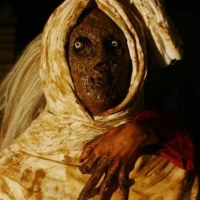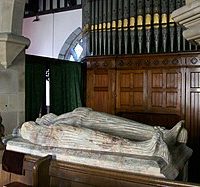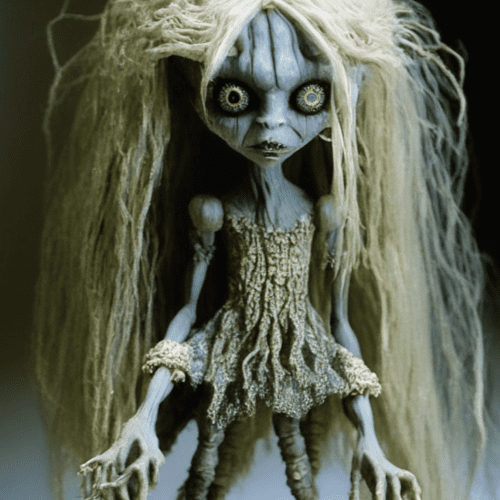Pocong : The Shrouded Ghost
Listen
At a glance
| Description | |
|---|---|
| Origin | South East Asian Mythology |
| Classification | Ghosts |
| Family Members | N/A |
| Region | Indonesia, Malaysia |
| Associated With | Death, Haunting |
Pocong
Introduction
The Pocong is one of the most recognized supernatural figures in Indonesian and Malaysian folklore, symbolizing the lingering connection between life and death. Deeply rooted in Islamic funeral traditions and Javanese spirituality, the Pocong is said to be the restless spirit of someone whose burial rites were not properly completed. The image of a corpse wrapped tightly in a white shroud (kain kafan) evokes both fear and pity, embodying themes of ritual neglect, unfulfilled duty, and spiritual unrest. Beyond its haunting presence, the Pocong reflects cultural attitudes toward death, religion, and the afterlife, evolving over time from a rural ghost story into a modern horror icon in films, social media, and urban legends.
Physical Traits
The Pocong is easily recognized by its unsettling appearance: a human form enveloped completely in a white burial shroud tied with knots at the head, neck, and feet. According to Islamic custom, these knots are supposed to be untied after 40 days to allow the soul to ascend peacefully. If left tied, the spirit is believed to remain trapped within the body, manifesting as a Pocong. Its bound legs force it to move in a distinctive hopping motion, which has become a central feature of its myth. Witnesses often describe the Pocong’s face as pale or decomposed, sometimes showing hollow eyes or a faint smile beneath the fabric. The eerie, muffled hopping sounds and sudden appearances in graveyards or near homes make this ghost particularly terrifying in folklore.
In some versions, the Pocong’s shroud appears aged or stained, symbolizing decay and the passage of time. The creature’s resemblance to an actual corpse gives it a sense of realism, reinforcing the fear that the spirit world is not far removed from the living.
Family
The Pocong does not belong to a divine or mythological family but represents a broad category of spirits rather than a single individual. Each Pocong originates from a specific person who died without proper rituals or whose soul remains bound by emotional or moral ties to the world. This distinction separates the Pocong from mythological beings like demons or deities; it is instead a tragic reminder of human mortality and religious neglect. In many stories, Pocongs appear near their homes or families, as though trying to communicate a final message or seek closure. Sometimes, they are believed to protect loved ones or warn them of impending danger, while in other cases, they may haunt relatives who failed to complete burial ceremonies correctly. The familial connection is symbolic rather than literal—it represents the link between the living and the dead, emphasizing the moral duty to honor ancestors and complete sacred rites.
Other names
Across Southeast Asia, the Pocong is known by several regional names that reflect linguistic diversity and local variations of belief. In Malaysia, it is often called Hantu Bungkus (“the wrapped ghost”), referring to its tightly shrouded appearance. Another name, Hantu Kafan, translates to “the shroud ghost,” highlighting its association with burial practices. In certain parts of Java, it may be referred to as Bobongkong, and in coastal areas among the Sama-Bajau communities, the spirit is sometimes called Kende-Kende. Despite the linguistic differences, these terms all describe the same spectral figure—a bound, restless soul unable to move on.
The widespread use of the name “Pocong” in Indonesian cinema and media has cemented it as the most recognizable version of the entity, even influencing horror culture in neighboring countries such as Brunei and Singapore.
Powers and Abilities
The Pocong is not traditionally viewed as a malevolent demon but as a tormented soul with limited but haunting powers. Folklore attributes several supernatural abilities to the Pocong, most notably its capacity to appear and disappear without warning. It often manifests in graveyards, abandoned houses, or near those who recently lost a family member. Witnesses report hearing the faint rustle of cloth or low moans before seeing it appear, usually at night.
The ghost’s hopping motion adds to its disturbing aura, though some modern interpretations suggest that older Pocongs, having decayed, may float or glide instead. In several tales, the Pocong is a bringer of bad luck or a sign of approaching death. Some say that seeing one too closely or hearing its call three times could foretell illness or disaster.
In Islamic tradition, the Sumpah Pocong or “Pocong Oath” ritual draws upon the ghost’s symbolism. In this rare ceremony, a person accused of lying or wrongdoing is wrapped in a burial shroud like a Pocong and swears their innocence before God. The ritual’s use of death imagery underscores the seriousness of divine judgment and the fear of eternal spiritual unrest.
Modern Day Influence
In modern Indonesia and Malaysia, the Pocong has transcended folklore to become a staple of popular culture. The ghost appears in numerous films, including Pocong 2 (2006), Pocong vs Kuntilanak (2008), and Mumun (2022), where it embodies themes of unfinished business, moral accountability, and fear of the afterlife. Television shows, novels, and even video games feature Pocong characters, often blending traditional horror with humor or social commentary.
In everyday culture, Pocong imagery appears in memes, street art, and YouTube prank videos. Its simple yet chilling costume—a wrapped white sheet—has made it an easy and popular choice for Halloween and local horror-themed events. Communities even stage mock Pocong sightings to attract tourists or raise awareness about traditional funeral customs.
At a deeper level, the Pocong serves as a reflection of social change. As urbanization spreads and traditional rituals fade, the legend reminds people of the importance of maintaining spiritual discipline and cultural identity. Folklorists view the Pocong as a metaphor for social anxieties surrounding death, neglect, and modernization—issues that remain deeply relevant in the region.
The Pocong is far more than a tale to frighten children; it encapsulates Southeast Asian perspectives on life, death, and moral duty. In Indonesia, its story reinforces the belief that every soul must be honored with proper rites to achieve peace. Communities continue to perform post-burial rituals such as tahlilan (collective prayer) and doa arwah (prayers for the deceased) to prevent spirits from turning into Pocongs. In Malaysia, similar practices intertwine with Islamic and animist traditions, emphasizing respect for the dead and fear of spiritual retribution.
Through generations, the Pocong’s legend has adapted to new contexts—from village ghost stories to modern horror films—while retaining its original religious and moral symbolism. It serves as a cautionary reminder that the boundary between the living and the dead is fragile, and that neglecting spiritual obligations can have lasting consequences.
In today’s digital world, the Pocong continues to evolve, blending folklore with pop culture. Whether appearing as a terrifying apparition in movies or as a humorous figure in online jokes, the Pocong remains a potent symbol of Southeast Asia’s enduring fascination with death and the supernatural.
Related Images
Source
Hilokal. (2024). Indonesian urband legends. https://www.hilokal.com/lessons/indonesian-urban-legends
Vocal Media. (2023). Most Scariest Ghost In Indonesia. https://vocal.media/fiction/most-scariest-ghost-in-indonesia
Scribd. (2025). Deconstructing Pocong the Indonesian Sacred Ghost. https://www.scribd.com/document/669009855/Deconstructing-Pocong-the-Indonesian-Sacred-Ghost-A-Diachronic-Analysis-of-Mumun-2022-Indonesian-Contemporary-Horror-Film
Taylor & Francis Online. (2023). Deconstructing Pocong, the Indonesian Sacred Ghost. https://www.tandfonline.com/doi/full/10.1080/10509208.2023.2230116
Facebook. (2025). Meanwhile in Kuala Lumpur, Malaysia. https://www.facebook.com/groups/898899773959040/posts/1561682001014144/
Surreal & Creepy. (2025). Hopping undead creatures wrapped in a shroud. https://surrealandcreepy.wordpress.com/2025/03/11/hopping-undead-creatures-wrapped-in-a-shroud
June Wallack. (2025). Pocong: Unveiling Indonesia’s Bound Ghost. https://junewallack.com/blog/pocong-unveiling-indonesias-bound-ghost
Academia.edu. (2024). Witchcraft and sumpah pocong. https://www.academia.edu/92334521/Witchcraft_and_sumpah_pocong
Endraswara, S. (2013). Indonesian Mysticism and Ghost Culture. Yogyakarta: Narasi.
Mulder, N. (2005). Mysticism in Java: Ideology in Indonesia. Jakarta: Pustaka Sinar Harapan.
Brakel, L. F. (1995). Islamic Funerary Practices in Southeast Asia. Journal of Southeast Asian Studies, 26(2), 345–362.
Tan, C. B. (2001). Religion and Modernization in Southeast Asia. Singapore: Institute of Southeast Asian Studies.
Heryanto, A. (2008). Popular Culture in Indonesia: Fluid Identities in Post-Authoritarian Politics. Routledge.
Frequently Asked Questions
What is lorem Ipsum?
I am text block. Click edit button to change this text. Lorem ipsum dolor sit amet, consectetur adipiscing elit. Ut elit tellus, luctus nec ullamcorper mattis, pulvinar dapibus leo.
What is lorem Ipsum?
I am text block. Click edit button to change this text. Lorem ipsum dolor sit amet, consectetur adipiscing elit. Ut elit tellus, luctus nec ullamcorper mattis, pulvinar dapibus leo.
What is lorem Ipsum?
I am text block. Click edit button to change this text. Lorem ipsum dolor sit amet, consectetur adipiscing elit. Ut elit tellus, luctus nec ullamcorper mattis, pulvinar dapibus leo.
What is lorem Ipsum?
I am text block. Click edit button to change this text. Lorem ipsum dolor sit amet, consectetur adipiscing elit. Ut elit tellus, luctus nec ullamcorper mattis, pulvinar dapibus leo.
What is lorem Ipsum?
I am text block. Click edit button to change this text. Lorem ipsum dolor sit amet, consectetur adipiscing elit. Ut elit tellus, luctus nec ullamcorper mattis, pulvinar dapibus leo.












